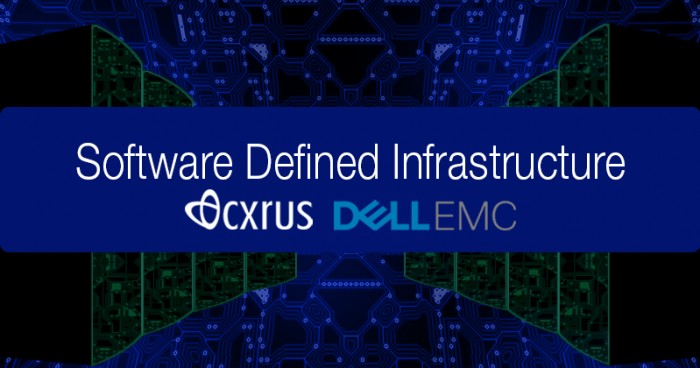

.jpg/9f0458ed-b7bb-cb7f-aee0-3d06760721e8/)



How Software Defined Infrastructure Can Transform Your Business
The No.1 priority of businesses today is Digital Transformation. According to a report by Gartner in 2016, 50% of CEO’s expect their industries to be substantially or unrecognizably transformed by it. It is a transformation with no perceived endpoint, but a recurrent digital evolutionary process. In order to succeed in the idea economy of today, organizations must incorporate greater degrees of flexibility, scalability, automation and innovation. For those companies who succeed in this endeavour, the rewards are enormous, and the necessitated aspiration to attain this greater agility begins with IT.
If all of this sounds cumbersome and overwhelming, think again. No longer are virtual environments dependent on separate computer, networking and storage infrastructures. Today, virtualized environments are delivered in a simple easy to deploy hyper-converged appliance, providing software-centric architecture in a commodity hardware platform form factor. A sterling example is the Dell EMC vxRail that packages VMware VSAN, vSphere and vCenter in a single appliance. By combining multiple technologies into a single platform, compatibility issues and dedicated expensive SANs are things of the past.
Whether in hardware or virtual form, servers still require a supporting network infrastructure underneath. Traditionally this infrastructure was made up of a disarray of switches, routers, security appliances and storage silos, all running proprietary software and managed either individually or through separate proprietary management applications. Technically, Software Defined Networking, SDN, separates the control plane from the data plane, allowing centralized automate management of not just your datacenter, but your entire hybrid infrastructure. Instead of a mesh of disconnected devices, SDN creates an array of highly synchronized elements, all working in coordination with one another in automated style.
With SDN, users can now provision services on demand, in real time, just as they are accustomed to elsewhere. Devices are now configured by automated software controllers which deliver configuration policies during the provisioning process. Imagine a networking ecosphere that can also automatically disengage services and resources in equal fashion. IT teams are now released of the burdens of supporting manual configuration tasks, allotting the time to direct their energies on valued added projects.
Meet the Enterprise Choice of SDN, VMware NSX.
NSX is VMware’s premier network virtualization and security platform for today’s Software-Defined Data Center. NSX extends the benefits of virtualization into all the network functions of your datacenter including switching, routing, load balancing, firewalling and monitoring. In a sense, it creates a network hypervisor, giving IT an interface platform to manage all virtual networking and security services independently of any underlying hardware. Network provisioning is reduced to a window of minutes if not seconds thanks to automated efficiencies.
Few companies today rely totally on an on-premise datacenter. Today’s enterprises are comprised of multiple sites over large geographic distances. With the proliferation of cloud computing, it only makes sense to migrate network control into the cloud, essentially software defining the WAN itself. The SD-WAN eliminates the need for multiple UTMs and WAN optimization appliances at every branch office and datacenter. It lessens the dependency on expensive MPLS links. It optimizes WAN connectivity and provides secure access to the Internet and cloud services by utilizing the same affordable internet pipe links that we are already familiar and comfortable with.
If you are looking for a partner to assist you in the digital transformation of your datacenter, turn to Cxrus, an end-to-end Enterprise IT solutions provider that can help you software define your datacenter or hybrid infrastructure from end-to-end.